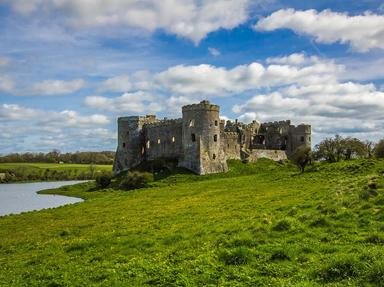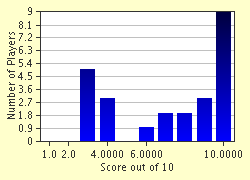Quiz Answer Key and Fun Facts
1. Yes, I have counted them! In which city in far western Wales, the smallest in Britain, can be found a lesser known flight of thirty-nine steps other than those made famous in the novel by John Buchan?
2. Which Pembrokeshire coastal town was the location for the film production 'Under Milk Wood', a literary work by the popular Welsh poet Dylan Thomas?
3. Located a short distance from Pembrokeshire's coast are three small islands. Each are of scientific interest and of national and international importance with regard to the wildlife found there. By what names are these islands known?
4. This small range of low hills lies in the north of Pembrokeshire and could, using a little imagination, have been named for the King of Rock and Roll! What name is given to this upland area?
5. Bae Sain Ffraid is a large geographical feature at the westernmost extremity of the county of Pembrokeshire. How does its name, Bae Sain Ffraid, translate into English?
6. In which Pembrokeshire town was the surrender document signed by the commander of the French Revolutionary invasion force after their mission failure in February, 1797?
7. Only visible at extremely low spring tides, what ancient natural feature can be seen at the beach at Newgale in the north-eastern reaches of St. Bride's Bay?
8. Many Welsh place names begin with the word 'Aber' such as Abergwaun (Fishguard), Abertawe (Swansea) and Aberdyfi (Aberdovey). The prefix 'Aber' denotes what in a Welsh place name?
9. Pivotal to the Allied victory in the Battle of the Atlantic, squadrons of RAF Coastal Command flying boats operated out of which important Pembrokeshire location?
10. Frequently encountered across the county, a large number of signposts display the words 'Llwybr Arfordir' and the symbol of an acorn. What do these signposts indicate?
Source: Author
SisterSeagull
This quiz was reviewed by FunTrivia editor
Tizzabelle before going online.
Any errors found in FunTrivia content are routinely corrected through our feedback system.

